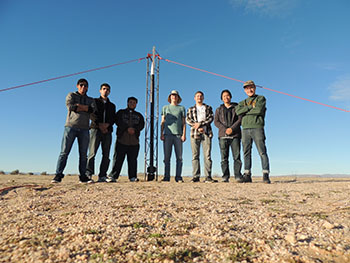
Each year, Vitech is please to award selected candidates grants of CORE Spectrum software for use in model-based engineering research and other academic initiatives in both traditional and non-traditional disciplines. Brendan Clarke of Cal Poly Pomona is a current participant in the program and we are happy to share the success of his project so far.
By Brendan Clarke, CFR Participant at Cal Poly Pomona
The NASA Student Launch (NSL) team at Cal Poly Pomona is using CORE for model-based systems engineering. The challenge for this year’s NSL national competition is to design a system that can mimic a Mars ascent vehicle. This means that the team has to build a robot that can autonomously collect a payload, load it into a rocket, erect the rocket to vertical, insert the motor igniter, launch it to 3000 feet, and on descent, eject the payload at 1000 feet.
I am the Cal Poly Pomona team’s system engineer and I decided to use model-based systems engineering to design this complex system to make sure that all of the requirements that were provided by NASA in the RFP were met. CORE was used to take the requirements and model an operational flow diagram of the system from the setup for a launch to the shutdown. This then defined the functions that the system had to perform and a functional flow diagram was constructed to visualize it. Once this was completed, it was very easy to choose the physical components that were needed to best perform those functions. CORE allowed us to create a physical interface diagram that helped us to identify important interfaces between components and potential risks that could be associated with them. This allowed us to show NASA in the PDR and CDR reviews that we were confident with the safety of our system and that it would meet all of their defined requirements.
As of the end of January 2015, the team has successfully built and launched the sub-scale launch vehicle and completed the PDR and CDR. The launch vehicle uses an airbrake system to adjust the apogee of the rocket during flight to 3,000 feet. A drogue parachute deploys at apogee and at 1,000 feet, the payload ejects out of the side of the rocket in its own container and a main parachute is deployed. With this complex of a system, it was absolutely necessary for us to have CORE for model-based systems engineering so that we could design the most efficient solution to best meet NASA’s requirements. We will be building the full-scale launch vehicle and autonomous ground support equipment in the coming months so go to cpprocketry.com to watch videos of our launch and keep up on our progress.
If you are involved in a research project or are a PhD candidate and would like to apply for the CORE for Research program, send an email to program administrator Katie Thacker at kthacker@vitechcorp.com.





